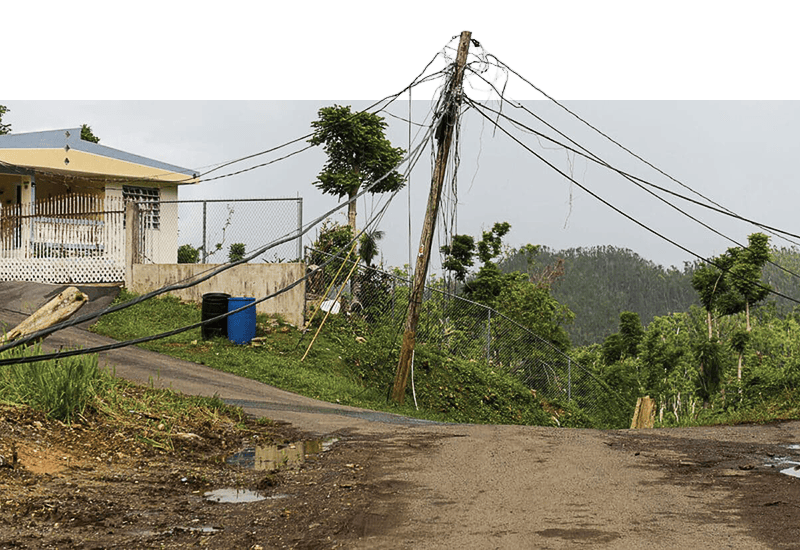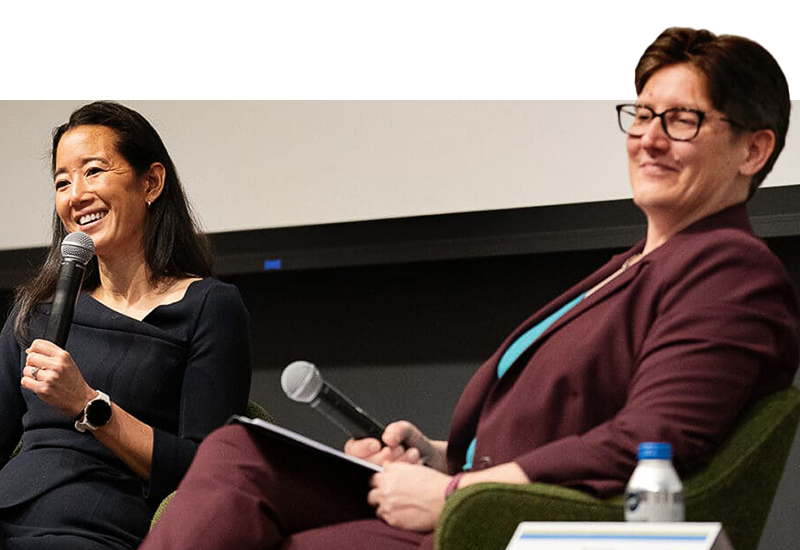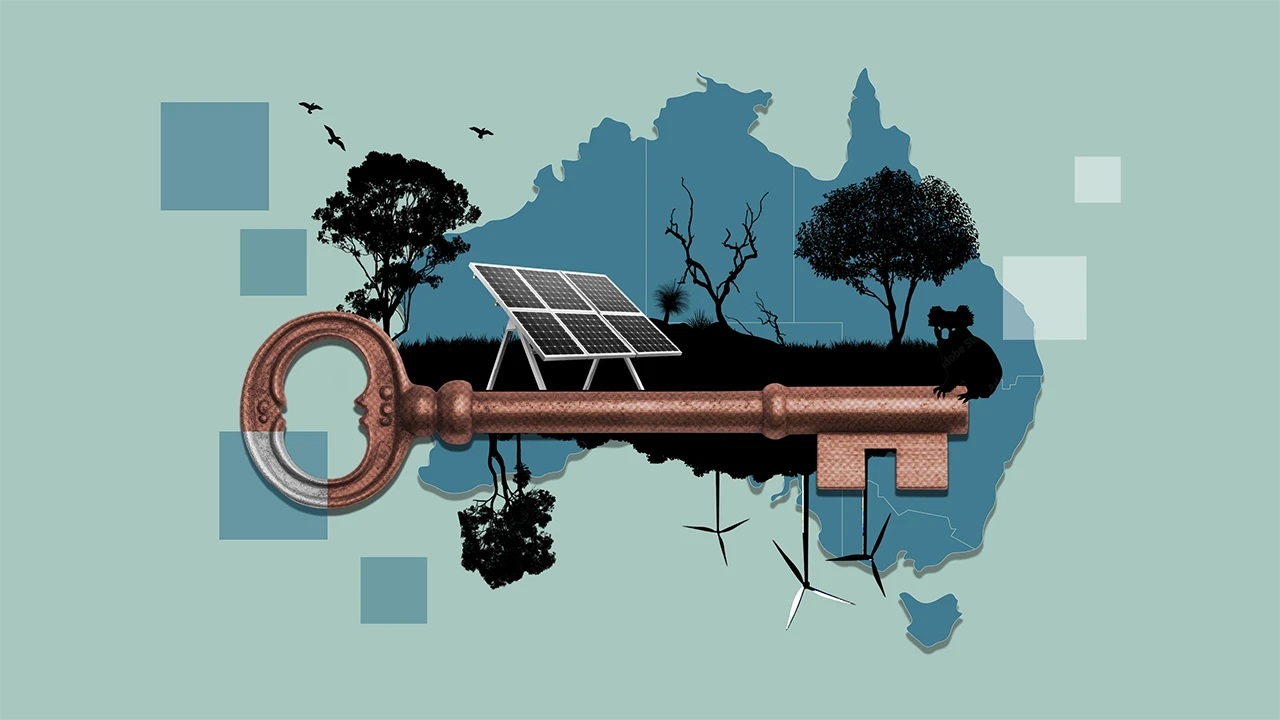Drawing on techniques used to minimize risk in financial markets, a Princeton-led team is creating software to help solve the challenge of integrating renewable energy into the electric grid without sacrificing grid reliability.
The effort aims to solve two distinct but connected problems — grid operators’ ability to smoothly shift operations when clouds or changing winds impact renewable energy outputs, and planners’ long-term decisions on how to balance renewables and other power sources in expanding the grid to meet increasing demand.
Banks are required to report risk measurements for sets of investments — for example, that they have a 5% probability of losing $200 million overnight — and to attribute that risk to specific assets or traders. “That’s the risk allocation problem,” said Ronnie Sircar, Princeton’s Eugene Higgins Professor of Operations Research and Financial Engineering (ORFE).
Similarly, the Princeton team’s system can calculate a power grid’s risk of failure, determine which sources contribute most to that risk, and guide both the daily and long-term reallocation of power sources to minimize the risk.
Led by Sircar and ORFE professor René Carmona, the effort has been funded by a five-year, $4.25-million grant from the Advanced Research Projects Agency – Energy (ARPA-E), a division of the U.S. Department of Energy that supports early-stage energy technology development. The researchers call their project ORFEUS, for Operational Risk Financialization of Electricity Under Stochasticity, an acronym echoing that of the ORFE department. Stochasticity is a term describing systems where changing conditions are extremely challenging to predict.
Computing risks in the energy grid “is not something that could be done directly by studying one set of solar panels,” said Carmona, the Paul M. Wythes ’55 Professor of Engineering and Finance. “We see how this set of solar panels performed in the past and assign a risk score that reflects its contribution to the whole grid’s risk. It’s a top-down approach to compute the risk for the entire grid every day, every hour.”
Carmona and former postdoctoral research associate Xinshuo Yang (now a quantitative strategist at Goldman Sachs) created a simulation engine that combines high-resolution weather forecasts with localized hourly data on the Texas energy grid’s production and demand during 2017 and 2018, and produces realistic scenarios of what to expect in the future. This data was made available by the National Renewable Energy Laboratory as part of the ARPA-E PERFORM program, an effort to modernize grid reliability through risk management strategies, which has supported the Princeton project as well as 11 other research projects across academia and industry.
The team then used these scenarios as a test case to develop measurements of system-level risk in the grid and attribute risk levels to individual renewable energy assets. This allowed them to propose a method for adjusting the unit commitment process that grid operators use on a daily and hourly basis to optimize energy production based on cost, supply and demand.
In a paper co-authored by Sircar, Yang and Arvind Shrivats, also a former postdoctoral researcher at Princeton (now at Susquehanna International Group), they describe how the new method accounts for the element of chance inherent in renewable energy, in contrast to current models that assume more control over power outputs. The risks of solar and wind generators are factored into their costs, and the software can suggest times to plan for increased output from natural gas plants (which is less costly than unplanned changes). In the longer term, the method also points to the most advantageous spots for increasing wind and solar capacity to lower overall vulnerability.
“The goal is to put a number on the uncertainty of renewable assets, not to punish them, but to incentivize more production where it’s needed,” said Sircar. “We’re trying to mitigate the worst 5% of days when renewables underperform and you have to go to very costly natural gas or possibly even coal power plants to make up the shortfall.”
The software could empower energy industry leaders looking to improve grid management and build new power assets in a way that optimizes earnings as well as overall grid efficiency and resilience.
The project’s technical adviser, Rana Mukerji, recently retired as senior vice president of the New York Independent System Operator, which monitors and coordinates the state’s power system.
“For individual plants, knowing how much they contribute to risk could help structure how they play in the market,” said Mukerji. A solar plant with battery storage, for example, could use the measurements to determine optimal times to discharge its storage — “which maximizes the revenues of the battery owner but also helps the system to meet supply and demand,” he said.
Mukerji is now working with Carmona and Sircar to conduct market research, interviewing energy companies about their needs to help chart a path for transforming the team’s method into commercial-grade software. Part of this transformation will involve detailed modeling of regional energy markets, including both power sources and transmission lines.
When he met the Princeton team in 2019, Mukerji said he was immediately interested in getting involved. “I knew [the energy transition] was coming, and this tool would be useful in about four or five years, which is now. It’s a tremendously exciting time for the industry because essentially everything is being electrified, not by burning fossil fuel but with renewable resources like wind and solar. It is being built at a rapid pace in every grid around the world.”









